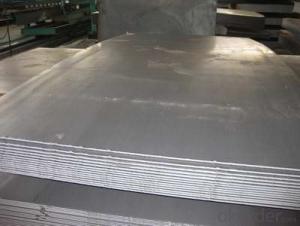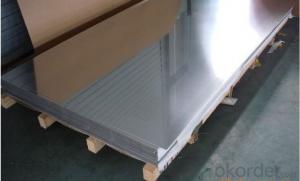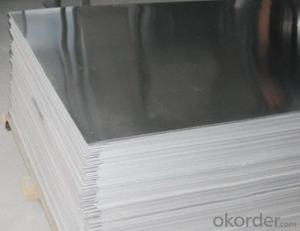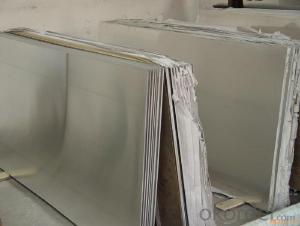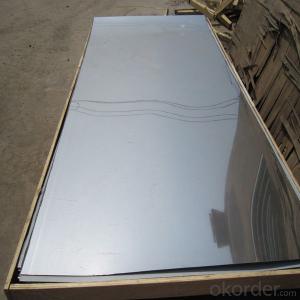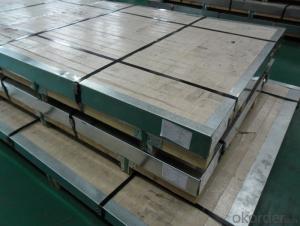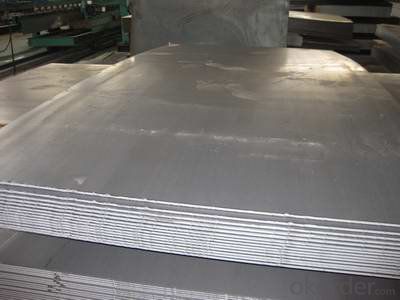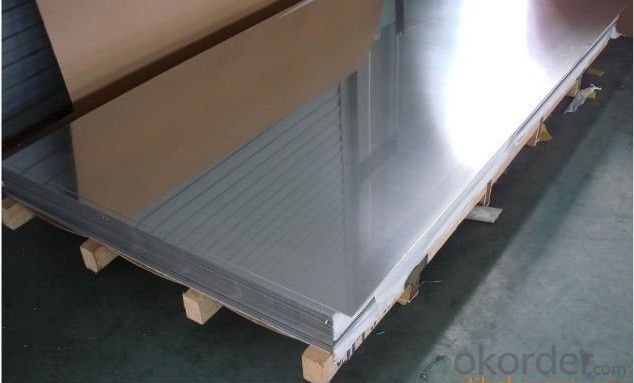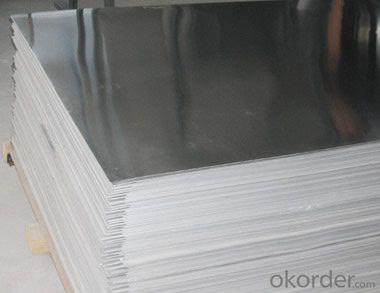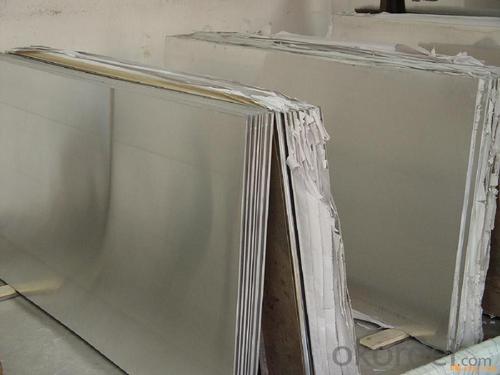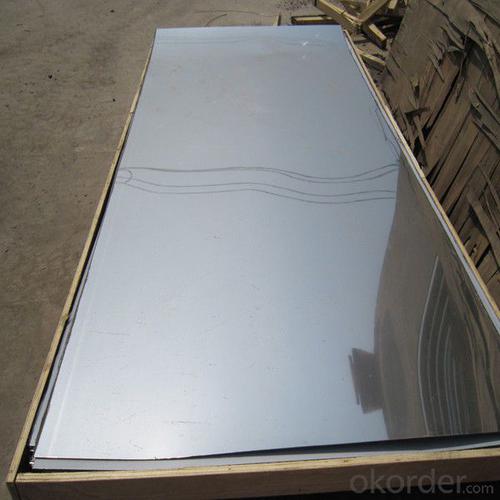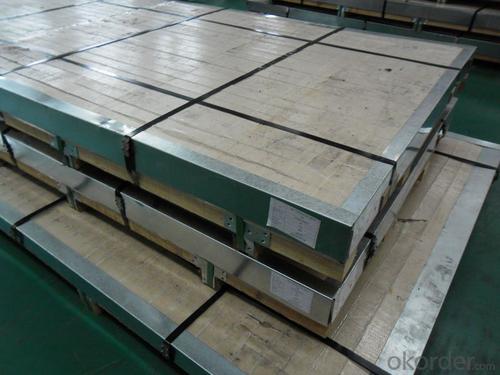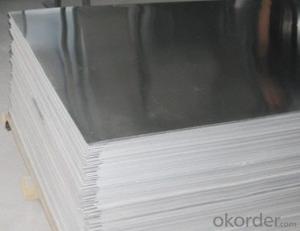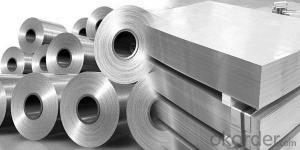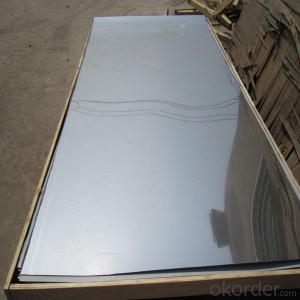Stainless Steel Plate 316L with No.4 Surface Treatment
- Loading Port:
- Shanghai
- Payment Terms:
- TT OR LC
- Min Order Qty:
- 500 m.t.
- Supply Capability:
- 5000000 m.t./month
OKorder Service Pledge
OKorder Financial Service
You Might Also Like
Hot sale stainless steel sheet 201/202/304/304l/310S/309S/316L/316Ti/316/316l/321,410/420/430/444/443/409L, and 904L.
Description of Stainless Steel Sheet:
Description | steel sheet,hot rolled steel sheet,cold rolled steel sheet, steel sheet,sheet,steel plate |
Standard | ASME, ASTM, EN ,BS,GB,DIN, JIS etc |
Application | Steel sheet applies to construction field, ships building industry, petroleum & chemical industries, war and electricity industries, food processing and medical industry, boiler heat exchanger, machinery and hardware fields. |
Packaging | Standard export sea-worthy packing |
Delivery time | 10-30 days |
Quality | No.1 |
Productivity | 500 tons/Day |
Note | Our company has cooperative relation between the domestic agents. Stainless steel sheet can be made accordingto the customers requirements. Fasten delivery. Quality assured. |
Contacts | If you have any question,please feel free contact me. |
Stainless steel sheet surface finish characteristics
Surface finish | Characteristics and application |
2B | The surface brightness and flatness of no2B is better than no2D. then through a special surface treatment to improve its mechanical properties,No2B could nearly satisfy comprehensive uses. |
No.1 | Polished with abrasive belt of grit#100-#200, have better brightness with discontinuous coarse stria, used as inner and external ornaments for building, electrical appliances and kitchen utensils etc. |
No.4 | Polished with abrasive belt of grit #150-#180,have better brightness with discontinuous coarse stria, but thinner than No3, are used as bathtub buildings inner and external ornaments electrical appliances kitchen utensils and food processing equipment etc. |
HL | Polished with abrasive belt of grit #150-#320 on the NO.4 finish and has continuous streaks, mainly used as buildings ornaments elevators, door of building, frontal plate etc. |
BA | Cold rolled, bright annealed and skin-passed, the product have excellent brightness and good reflexivity like mirror, kitchen apparatus, ornament etc. |
8K | The product have excellent brightness and prefer reflexivity can to be the mirror. |
Main Features of stainless steel sheet :
•Escalator, Elevator, Doors
•Furniture
•Production tools, Kitchen appliances, freezers, cold rooms
•Auto Parts
•Machinery and Packaging
•Equipment and Medical devices
•Transport system
Product Details:
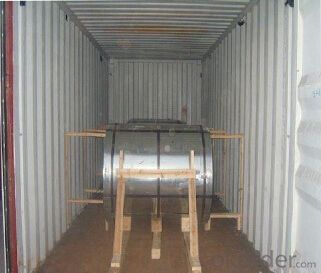
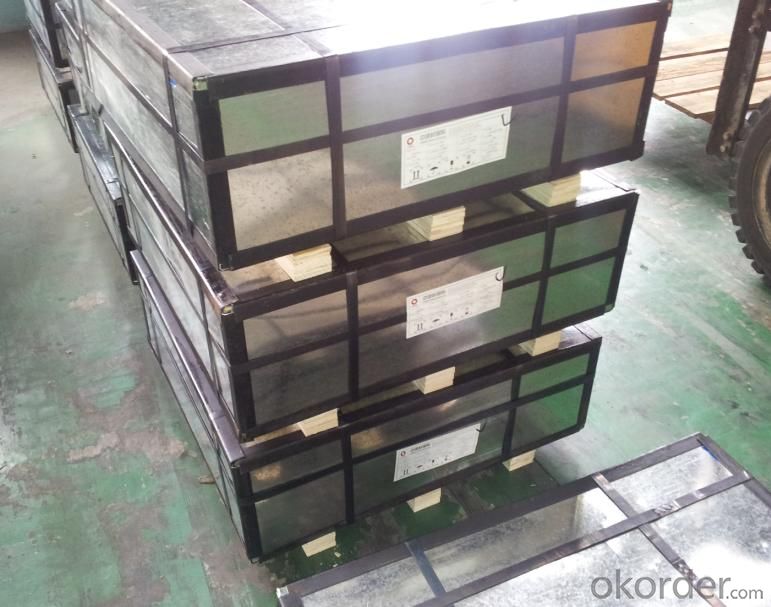
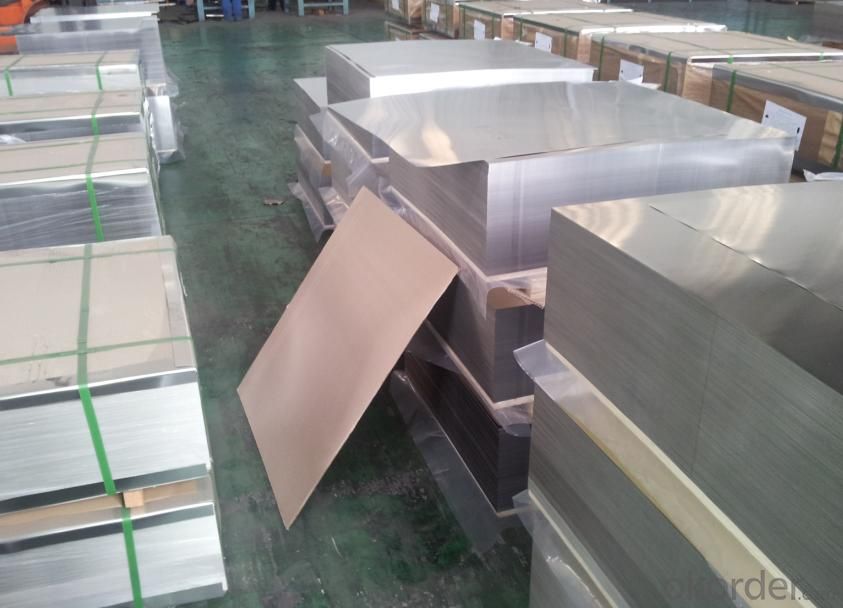
Sandard Seaworth Packing(wooden packing with water proof paper)

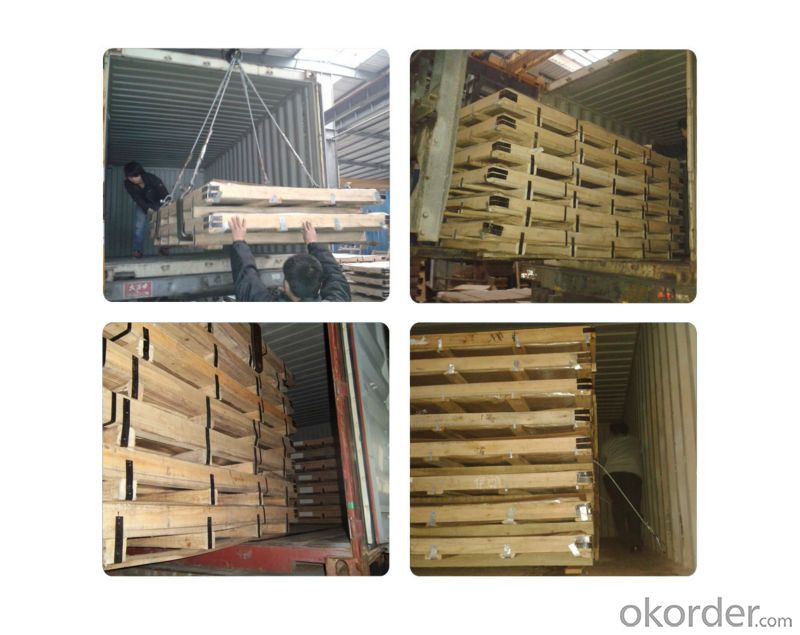
FAQ:
1. What's the quality?
very fine
2. How long get reply?
within 24 hours
If you have any question about stainless steel sheets,donot forget to sending the email to Us! You will get the competitive Price and have a very good experience about the Buying Process! CNBM International Corporation is always your trustful friend!
- Q: How do you prevent warping or distortion in stainless steel sheets?
- To prevent warping or distortion in stainless steel sheets, several measures can be taken. First, it is important to properly handle and store the sheets to prevent any bending or twisting during transportation or storage. Secondly, ensuring a smooth and even distribution of heat during welding or fabrication processes can help minimize the chances of warping. Additionally, using proper clamping techniques and supports during machining or cutting operations can help maintain the shape and integrity of the stainless steel sheets. Lastly, adhering to the recommended thicknesses and specifications provided by the manufacturer for specific applications can also help prevent warping or distortion in stainless steel sheets.
- Q: What is the flatness tolerance for stainless steel sheets?
- The specific grade and thickness of a stainless steel sheet can cause variations in its flatness tolerance. Typically, the flatness tolerance is defined as the maximum deviation from a completely flat surface. For stainless steel sheets, the accepted industry standard usually sets this tolerance at around 0.003 inches per linear foot. Nevertheless, it is crucial to acknowledge that various industries or applications may have their own unique flatness tolerance criteria. Consequently, it is always wise to refer to the relevant standards or specifications for the specific stainless steel sheet in question to ascertain the suitable flatness tolerance.
- Q: How do you prevent scratching on stainless steel sheets during handling and installation?
- To avoid scratching stainless steel sheets while handling and installing them, there are several precautions you can take: 1. Apply protective covering: Prior to handling or installation, it is advisable to apply a protective film or covering on the surface of the stainless steel sheets. This covering acts as a barrier, safeguarding against scratches and scuff marks during transportation and installation. It is important to ensure that the chosen covering is suitable for stainless steel and leaves no residue when removed. 2. Handle with caution: It is crucial to be mindful of how you handle the stainless steel sheets. Avoid dragging or sliding them against rough surfaces or each other, as this can result in scratches. Instead, use appropriate lifting techniques and handle the sheets with clean, dry hands or gloves to minimize the risk of leaving marks. 3. Utilize suitable tools: When working with stainless steel sheets, ensure that you use tools specifically designed for this purpose. Refrain from using tools with rough or abrasive surfaces that could potentially scratch the stainless steel. Opt for tools made from soft materials or those with protective coatings to reduce the chances of surface damage. 4. Keep work areas clean: Before installing stainless steel sheets, it is essential to ensure that the work area is clean and free from any debris or particles that could potentially scratch the surface. Use a clean cloth or soft brush to wipe down the area, removing any dirt, dust, or loose materials that could cause scratches during the installation process. 5. Secure sheets during transportation: If you need to transport stainless steel sheets, it is crucial to secure them properly to prevent any movement or shifting that could lead to scratches. Utilize appropriate packaging materials such as foam inserts, edge protectors, or straps to keep the sheets in place and minimize the risk of damage. By adhering to these preventive measures, you can significantly reduce the likelihood of scratching stainless steel sheets during handling and installation, ensuring a flawless finish and preserving the quality of the material.
- Q: Can stainless steel sheets be used for fire-rated applications?
- Yes, stainless steel sheets can be used for fire-rated applications. Stainless steel is known for its high melting point and excellent heat resistance properties. It retains its strength and integrity even at high temperatures, making it a suitable material for fire-rated applications. Stainless steel sheets are often used in fire-rated doors, walls, and ceilings, providing a durable and reliable barrier against fire. Additionally, stainless steel's corrosion resistance properties make it a long-lasting option, ensuring its effectiveness in fire-rated applications over time.
- Q: What are the benefits of using brushed stainless steel sheets?
- Using brushed stainless steel sheets has several advantages. To begin with, their sleek and attractive appearance makes them a popular choice for appliances, countertops, and backsplashes. The brushed finish adds a unique texture and matte appearance, bringing sophistication to any space. Additionally, brushed stainless steel sheets are highly durable and resistant to corrosion, making them suitable for indoor and outdoor use. They can withstand harsh conditions such as chemicals, moisture, and extreme temperatures. Moreover, their brushed finish helps to hide fingerprints, smudges, and scratches, making them easy to clean and maintain. Furthermore, brushed stainless steel sheets are hygienic and inhibit bacteria growth, making them ideal for the food and medical industries. Their smooth surface allows for easy cleaning and disinfection, ensuring a safe and sanitary environment. Moreover, these sheets offer excellent longevity and are a cost-effective investment. They resist wear and tear, maintaining their appearance for many years without the need for replacement. Lastly, brushed stainless steel sheets are versatile and can be customized to fit different design preferences. They can be easily cut, shaped, and formed into various sizes and shapes, allowing for endless design possibilities. Whether you prefer a modern, industrial look or a more traditional and elegant style, brushed stainless steel sheets can be tailored to meet your specific needs. In conclusion, the use of brushed stainless steel sheets offers benefits such as an attractive appearance, durability, corrosion resistance, hygienic properties, longevity, and versatility. Whether used in residential, commercial, or industrial settings, these sheets provide a wide range of advantages, making them a popular choice for various applications.
- Q: How do you prevent stress corrosion cracking in stainless steel sheets?
- To prevent stress corrosion cracking in stainless steel sheets, several measures can be taken. First and foremost, selecting the appropriate grade of stainless steel that is resistant to stress corrosion is crucial. Additionally, avoiding exposure to corrosive environments, such as chloride-containing solutions or high temperatures, is important. It is also recommended to minimize or eliminate tensile stresses through proper handling, fabrication, and installation techniques. Lastly, implementing regular inspection and maintenance practices can help detect any signs of stress corrosion cracking early on and take necessary preventive measures.
- Q: Can stainless steel sheets be used for medical sterilization equipment?
- Certainly, medical sterilization equipment can indeed utilize stainless steel sheets. Due to its exceptional resistance to corrosion, impressive heat resistance, and remarkable durability, stainless steel stands as a favored material choice within the medical industry. These remarkable attributes render stainless steel sheets perfectly suited for a wide array of medical applications, including the construction of sterilization equipment. With the ability to endure high temperatures and endure multiple sterilization cycles without warping or deteriorating, stainless steel sheets prove themselves suitable for autoclaves and other sterilization devices. Moreover, stainless steel's effortless cleaning and maintenance capabilities play a critical role in preventing the proliferation of bacteria and other harmful microorganisms. As a result, stainless steel sheets find widespread usage in medical settings where the presence of sterilization equipment is imperative.
- Q: What are the different types of edges available for stainless steel sheets?
- Stainless steel sheets come in various edge types, each serving its own purpose and offering a unique visual appeal. Here are some commonly used edge types: 1. Mill Edge: The mill produces this standard edge finish, which is often the most cost-effective option. It has a relatively smooth, unfinished appearance. 2. Slit Edge: This edge is achieved by cutting the stainless steel sheet lengthwise, resulting in a straight edge with slight burrs. It is commonly used for thinner gauges of stainless steel. 3. Deburred Edge: To ensure safety, the deburred edge is created by removing any burrs or sharp edges from the slit edge. This results in a smoother finish, making it suitable for applications where safety is a concern, such as food processing or medical equipment. 4. Rounded Edge: By rounding off the sharp corners of the stainless steel sheet, the rounded edge provides a more visually pleasing look while also eliminating sharp edges for improved safety. 5. Beveled Edge: Adding a touch of elegance, the beveled edge is created by cutting a diagonal bevel along the edge of the stainless steel sheet. It is often used for decorative purposes. 6. Rolled Edge: The rolled edge is formed by subjecting the stainless steel sheet to high pressure, resulting in a smooth, curved edge. It is commonly used in applications where a seamless look is desired, such as architectural projects or automotive components. Overall, the selection of the appropriate edge type for stainless steel sheets depends on specific requirements, including functionality, safety, and aesthetics. Considering these factors is crucial in order to choose the most suitable edge type for the desired end use.
- Q: Are stainless steel sheets resistant to staining from food?
- Stainless steel sheets possess a remarkable resistance to staining caused by food. Renowned for its exceptional corrosion resistance and non-reactivity with various substances, including food, stainless steel stands as a favored choice for kitchen appliances and cookware. Its capacity to endure prolonged exposure to food without staining or undergoing chemical reactions makes it highly sought-after. Moreover, stainless steel sheets are effortless to clean, making them the perfect fit for food preparation areas where cleanliness is of utmost importance. Furthermore, the sleek and impermeable surface of stainless steel sheets prevents the absorption of food particles and liquids, thus minimizing the risk of staining. In summary, stainless steel sheets offer a long-lasting and stain-resistant alternative for applications related to food.
- Q: What are the different types of perforated finishes available for stainless steel sheets?
- There are several different types of perforated finishes available for stainless steel sheets, each offering a unique look and functionality. 1. Round Hole: This is the most common type of perforated finish for stainless steel sheets. It features evenly spaced round holes that provide a modern and clean aesthetic. 2. Square Hole: Similar to the round hole finish, square holes are evenly spaced but have a square shape. This finish is often chosen for its simple yet distinctive appearance. 3. Slotted Hole: Slotted hole perforated finishes have elongated holes, which can be either straight or staggered. This type of finish is often preferred for its decorative appeal and ability to provide excellent ventilation. 4. Hexagonal Hole: Hexagonal hole perforated finishes have six-sided holes, offering a visually appealing and unique pattern. This finish is commonly used in architectural applications to create a modern and eye-catching design. 5. Decorative Patterns: In addition to the standard hole shapes mentioned above, stainless steel sheets can also be perforated with various decorative patterns. These patterns can include floral designs, abstract shapes, or custom designs, allowing for a truly unique and personalized finish. It is important to note that the choice of perforated finish depends on the intended use of the stainless steel sheet. Factors such as the desired appearance, functional requirements (such as ventilation or filtration), and the specific application will all influence the selection of the appropriate perforated finish for stainless steel sheets.
Send your message to us
Stainless Steel Plate 316L with No.4 Surface Treatment
- Loading Port:
- Shanghai
- Payment Terms:
- TT OR LC
- Min Order Qty:
- 500 m.t.
- Supply Capability:
- 5000000 m.t./month
OKorder Service Pledge
OKorder Financial Service
Similar products
Hot products
Hot Searches
Related keywords
